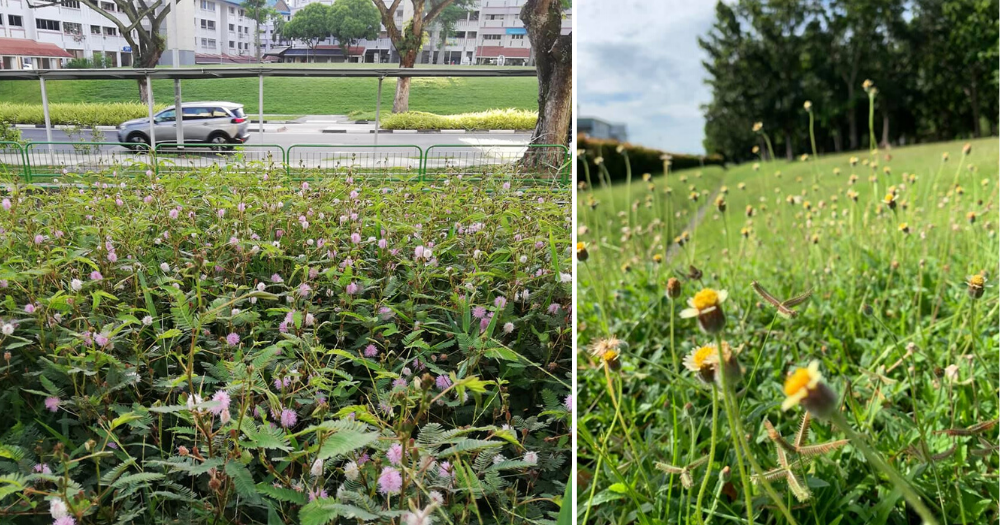Many in Singapore were delighted by the flourishing grass verges beside roads and pavements that sprung up recently during the circuit breaker.
The lack of human traffic and reduced frequency of grass-cutting during circuit breaker resulted in the rather pleasant and unintended side-effect of wildflowers popping up in green spaces.
The phenomenon led to numerous people posting photos of the plants, and the accompanying butterflies and bees, to social media.
Unfortunately, these pretty sights will likely be gone soon, according to Senior Parliamentary Secretary for National Development Sun Xueling in Parliament on June 5.
Reasons for maintaining grass verges
Nominated Member of Parliament Walter Theseira asked the Minister for National Development whether if have been any benefits to the environment and wildlife from reducing the frequency of grass-cutting during the circuit breaker period.
Additionally, he questioned if the frequency of maintenance could be permanently reduced to "save public expenditure, reduce foreign manpower needs, and to improve biodiversity".
In response, Sun said that the National Parks Board (NParks) would be progressively stepping up the frequency of the maintenance of grass verges as circuit breaker measures are rolled back.
This, she said, is due to public health and safety reasons.
Tall grass can conceal discarded litter, which can make dengue control operations more difficult.
The untamed plants would also pose fire risks during prolonged periods of dry weather.
"Naturalistic" verges already implemented
Sun highlighted the fact that even before the circuit breaker, NParks has been implementing "naturalistic planting" along some green verges at public routes and paths.
These "naturalistic" verges, also known as Nature Ways, use "multi-tiered planting" of various types of plants like trees, shrubs and ground cover to replicate and recreate the natural structures of forests.
Through this, lesser maintenance is required, and local biodiversity benefits, Sun said.
"They make paths cooler, and more comfortable for users, and facilitate the movement of birds and butterflies between green spaces. these measures have benefited the environment and biodiversity, and reduced the need for frequency of greenery maintenance needed."
Sun added that NParks will continue to identify more sites which can be curated and transformed into naturalistic landscapes, and will implement more Nature Ways.
There are currently 24 Nature Ways in Singapore, stretching 100km in total. They connect areas of high biodiversity such as the Western Catchment (SAFTI Live Firing Area), Central Catchment Nature Reserve and Bukit Timah Nature Reserve.
NParks aims to increase the length of Nature Ways to 180km by 2030.
With regard to Theseira's point about reducing foreign manpower needs, Sun responded that such work is increasingly being mechanised, and innovative technology will be used to further decrease the need for manual labour.
"NParks will continue to encourage productivity in the greenery sector," she said.
Top photo from Ria Tan / FB and Christine Cheng / FB
If you like what you read, follow us on Facebook, Instagram, Twitter and Telegram to get the latest updates.
